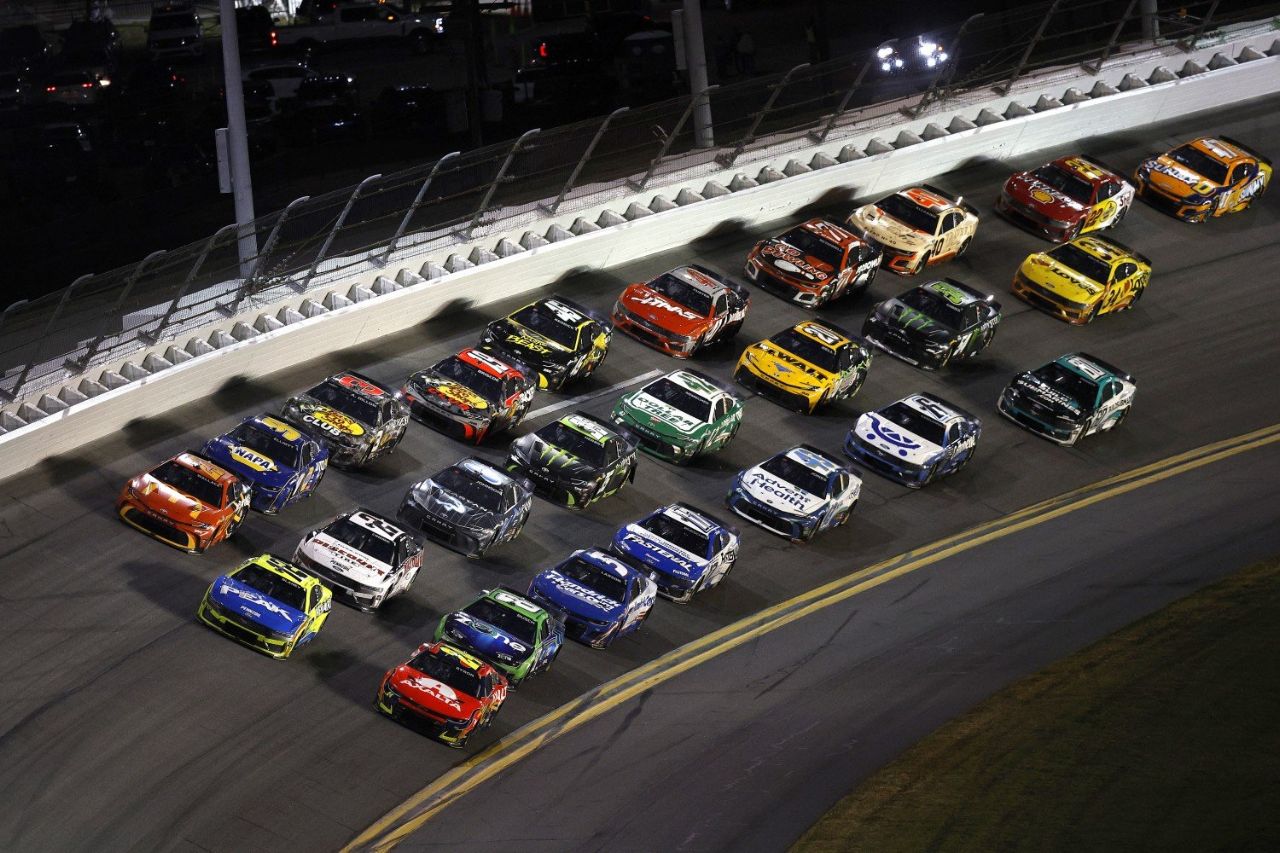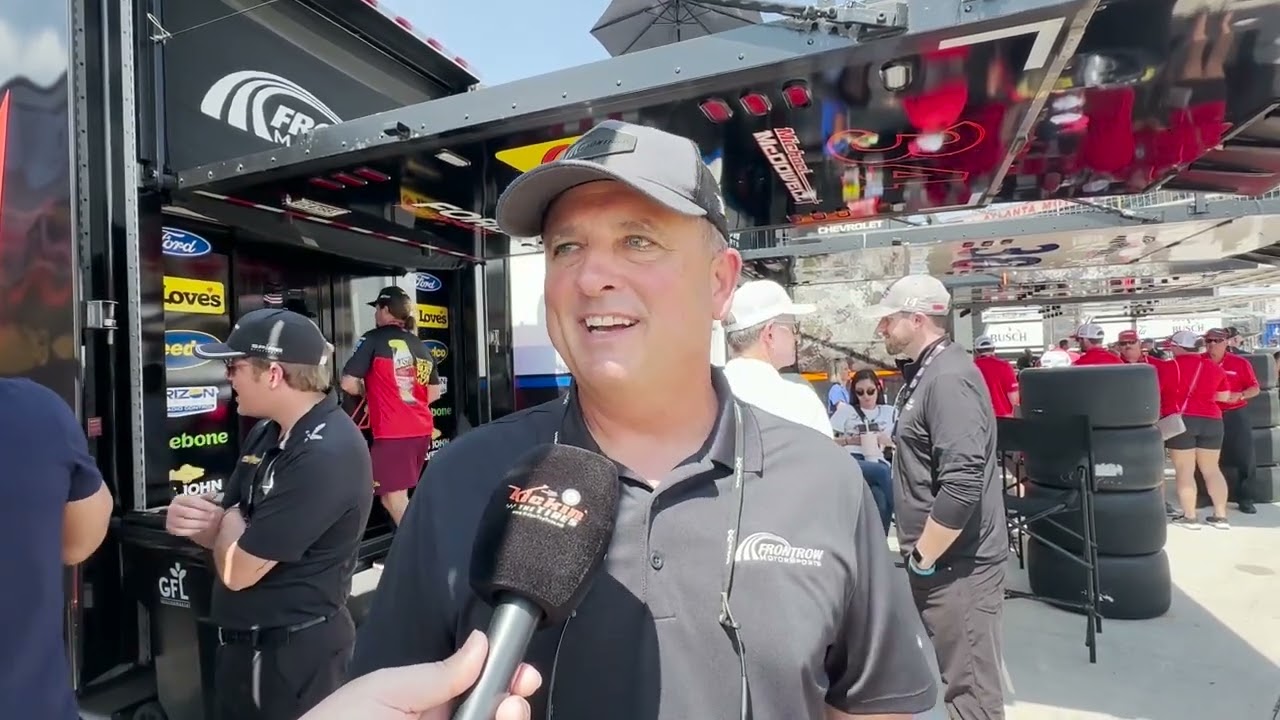Shrinking the Grid: Could Fewer Cars Save NASCAR’s Bleeding Teams?
At their Charlotte sprawling motorsports campus, Bob Jenkins (pictured) pores over a ledger that might as well be written in blood. The owner of Front Row Motorsports, a scrappy three-car operation that’s punched above its weight for years, has poured over $100 million into his dream since buying the team in 2005.
–Mark Cipolloni–
But as of this week, unsealed documents from the federal antitrust lawsuit rocking NASCAR reveal the grim arithmetic: $60 million in losses since the charter system debuted in 2016, with compound deficits ballooning to $81.4 million across four seasons for one anonymous team. Jenkins, a soft-spoken real estate magnate turned racing visionary, has long voiced the frustration of mid-tier owners caught in the squeeze. “It’s not possible that I could recoup what I have spent on cars, and equipment, and people,” he said earlier this year, highlighting the insurmountable financial barriers that have pushed teams to the brink.
The lawsuit, filed in October 2024 by Jenkins’ Front Row and Michael Jordan’s 23XI Racing, isn’t just a legal salvo—it’s a financial autopsy of NASCAR’s underbelly. Set for trial on December 1 in U.S. District Court in Charlotte, the suit accuses NASCAR of monopolistic strangleholds: owning 13 of 20 Cup tracks, dictating $7.7 billion in media deals without team input, and hoarding 90% of the $1.1 billion annual TV revenue pie for itself. While NASCAR posted a tidy $103 million profit on $537 million in 2024 revenue, teams limp along on a $431 million payout pool for 2025—averaging $12 million per charter holder, or a paltry $141,000 base per race before performance bonuses.
Operating a single Cup car? Try $25-30 million annually: $400,000 per Next Gen chassis, hybrid engines pushing $1 million a pop, tire tests, and cross-country travel for 36 grueling weekends. Payouts grow a measly 3% yearly through 2031; costs? Double digits, fueled by inflation and R&D arms races.
The charter system, NASCAR’s 2016 stab at stability, was supposed to guarantee spots and revenue streams for 36 teams. Instead, it’s a gilded trap. The “Performance Plan” skews 70% of funds to points standings—36 shares for the top dog, a measly one for the backmarker—leaving mid-pack warriors like 23XI scraping by on sponsor scraps. Even winners feast unevenly: A championship nets $2.84 million from the $33.7 million points fund, but that’s chump change against the $81 million hole some teams have dug. As Denny Hamlin, co-owner of 23XI, quipped on his podcast amid the fallout, “NASCAR’s handing out participation trophies while we’re burning cash like it’s 2008.”

Related Article: Steve Phelps’ Bold Claims Sidestep NASCAR’s Decade-Long TV Ratings Slide
Veteran NASCAR broadcaster and former driver Kenny Wallace, never one to mince words, piled on this week, declaring that the sanctioning body had unleashed chaos by ever introducing charters in the first place. “NASCAR was ruling, and they were ruling hard,” Wallace said in a fiery video rant. “And they opened up Pandora’s Box by giving these teams what they asked for. And there’s that old saying, ‘Be careful, you give them an inch, they’ll take a mile.’
“They gave them the charter system. The rules were not in place properly at NASCAR for them to open this up and give them a charter. NASCAR had good rules in place, and then they ruined it by opening up a charter system.”
Wallace warned that the financial disclosures have only amplified the discord, with “nobody in the industry” thrilled about the current state of affairs: “When you give somebody an inch, they take a mile. Now, hopefully things will turn out for the better, but right now, this is not good. Because everybody in the industry does not like this.” He fretted that the infighting could erode the sport’s appeal, turning interpersonal beefs into barriers for growth unless a swift resolution reins in the teams without gutting the quality.
Enter the radical whisper circulating in team war rooms and garage whispers: Shrink the field. With 40 cars thundering to green each Sunday—36 charters plus four open entries—the grid is a feast-or-famine frenzy. Fewer mouths at the trough could mean fatter checks for survivors, echoing NASCAR’s own playbook when it culled the field from 43 cars in 2015 to 40 amid rising costs and sponsor droughts. Historical precedents abound: The Cup Series started with 33-35 car fields in the 1950s, ballooning to 43 by the 1970s amid the oil crisis and TV boom, only to contract as economics bit harder. Proponents argue a 32- or 35-car cap could redistribute the $431 million pool more equitably—perhaps $15-18 million per team—while slashing logistics costs by 20-25% on parts, crew, and travel.
Jenkins has been vocal about the need for a fairer system, refusing to sign the latest charter agreement alongside 23XI. “I have my own beliefs. I’m a fairly independent guy. And I think they felt similar to how I felt,” he explained.
“I did realize I couldn’t take this on on my own. So had they signed, I would have probably had to have signed, and then, just perhaps, sold my charters or got out of the sport at some point.” Front Row and 23XI’s refusal to ink the deal in 2025 slashed their guaranteed payouts but amplified their fight for reform. If victorious, the suit could mandate revenue audits or team veto power on deals, but insiders point to consolidation as a potential path forward.
As Jenkins has emphasized, “I think it’s been a concerted effort to pull back a lot of the teams’ rights as far as governance and we just feel like it was kind of repressive.” He added that the teams remain committed to growth: “We’re probably two of the more bullish teams in the garage as far as wanting to expand and buy another charter and grow. So, like, we’re passionate about it. We love the sport.”
The math tempts. A 2025 Forbes analysis of charter values—now fetching $25 million apiece, up sixfold since 2021—shows the system’s irony: Teams can’t afford to race but can’t sell out without devaluing the grid. Smaller fields could stem the “start-and-park” era’s echoes, where underfunded entries limp laps to collect purses, eroding competition. Richard Childress Racing, a charter signer, griped that a single points penalty could torch $1 million in future shares—multiply that by a leaner field, and mid-tier teams like his might break even.
But not everyone’s revving for a rollback. NASCAR Commissioner Steve Phelps, in a tense AP interview this week, dismissed the chaos as “settleable,” insisting the 2025 charters are “progress” with $1.1 billion in team pay—up from $500 million pre-2016. Shrinking fields risks backlash: Fans crave the pack-racing pandemonium, and a thinner roster could spike TV ratings woes (already down 14% this year) by muting the multi-car wrecks that juice highlights. Diversity takes a hit too—fewer spots mean fewer doors for young guns, women, and minorities like Jordan’s 23XI, which fields Bubba Wallace as NASCAR’s lone Black driver.
Team insiders at mid-tier outfits like Front Row echo the tension: A smaller field might streamline costs on paper, but it risks entrenching the Big Three—Hendrick, Gibbs, Penske—while squeezing out the scrappers in the middle. As garage chatter goes, “We’re already fighting for scraps; fewer spots just means fewer of us survive the cut.” They’ve seen Xfinity and Trucks, sans charters, hemorrhage teams to the tune of sub-$3 million weekend purses. A federal judge’s June order for 12 teams to cough up 11 years of financials—revenue, costs, net losses—lays bare the rot: Only the top half of Cup outfits turn paper profits; the rest bleed red.
As Phoenix’s championship dust settles this weekend, whispers of settlement swirl—Phelps claims talks are “our hardest push yet.” Jenkins, ever the optimist for the sport’s future, has called for a system that rewards investment: “I have been part of this racing community for 20 years and couldn’t be more proud of the Front Row Motorsports team and our success. But the time has come for change.
“We need a more competitive and fair system where teams, drivers, and sponsors can be rewarded for our collective investment by building long-term enterprise value, just like every other successful professional sports league.”
In NASCAR’s high-stakes poker game, the ante just rose—and the table might soon feel a whole lot emptier.
